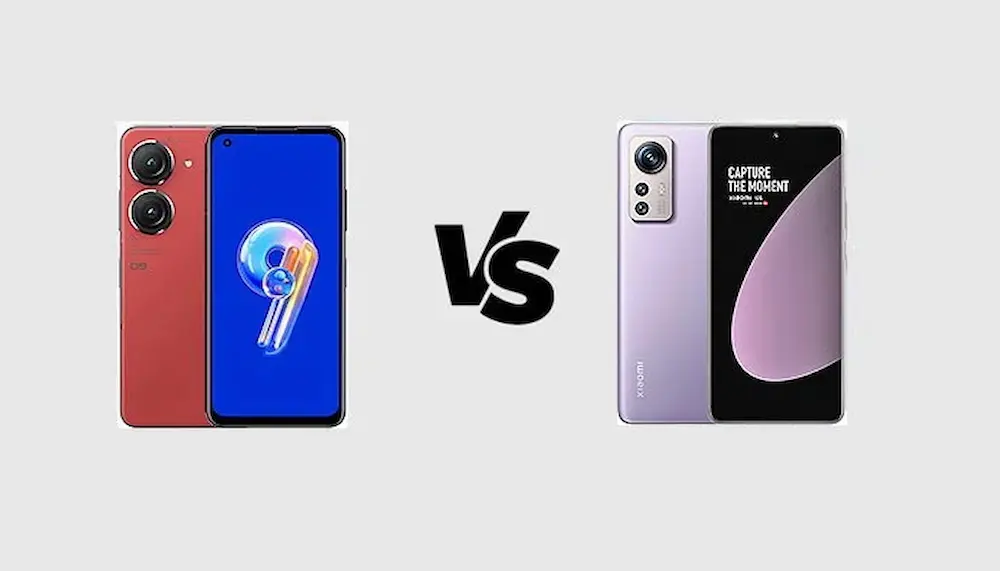Asus Zenfone 9 vs Xiaomi 12S features & specs Comparison
- 09 Aug, 2022

By 2022, Asus has unveiled the world’s smallest premium smartphone: the Zenfone 9. If we limit our search to Android handsets with flagship-level specs, there is no more tiny phone than this one. But there are a few more compact flagships out there, despite their larger size. It is the Xiaomi 12S that is the most recent if we omit the new Asus model. Zenfone has previously been contrasted with the current small flagship from the world’s largest mobile phone manufacturer, the Samsung Galaxy S22, in our previous comparisons. The Asus Zenfone 9 vs Xiaomi 12S have now been put side by side to see how they stack up in terms of key specs. Which one is the most cost-effective? Through this comparison, we expect to get an answer to this question.
Display
The Asus Zenfone 9’s 5.9-inch diagonal and small size make it ideal for one-handed usage or carrying about in a pocket. Because of this, the Xiaomi 12S is an excellent choice for those who want the best possible picture quality. It has a 6.28-inch AMOLED display with a Full HD+ resolution of 1080 x 2400 pixels, a 120 Hz refresh rate, HDR10+ certification, and Dolby Vision compatibility that can display up to 68 billion colours. In spite of its lower-quality display, the Asus Zenfone features HDR10+ certification, Full HD+ resolution, and a 120 Hz refresh rate. Even though it has an AMOLED display, the fingerprint scanner on the Zenfone is side-mounted on the power key, as opposed to being in the display on the Xiaomi. The stereo speakers on both phones are excellent.
Design
It was previously noted in the introduction that the Asus Zenfone 9 is a smaller phone than Xiaomi’s 12S. In contrast to the Xiaomi, which is made of aluminium and glass, the Xiaomi has a glass back and a stainless steel frame. Although the Zenfone has an aluminium body, the back is plastic. Although it has a larger battery, the 12S is lighter and slimmer than the competition, even if it’s also more expensive. IP68 certification, which makes it dust and water-resistant, is the sole difference between this pair of devices. The Xiaomi has a greater screen-to-body ratio and smaller bezels surrounding the display, which I like, but it’s a question of personal preference.
The pros and cons of the Zenfone 9 over the Xiaomi 12S
The Zenfone 9
PRO
- Camera With A Better Front Lens
- A Smaller Footprint
- 16GB Of RAM Is An Option.
- IP68 Is A Water-Resistant Standard.
- Expanded Accessibility
CONS
- It takes longer to charge
Xiaomi 12S
PRO
- Expanded Exposure
- Faster Recharging
- Increased Capacity Of The Battery
- Chargers That Can Be Used Wirelessly
- Additional High-Quality Resources
CONS
- Dimensions
The Xiaomi 12S costs at least €570/$580 in China, while the Asus Zenfone 9 starts at €729/$750 on the worldwide market. The 12S is now unavailable on the worldwide market. Which one would you choose now that you’re aware of the all the pros and cons of Asus Zenfone 9 vs Xiaomi 12S?


